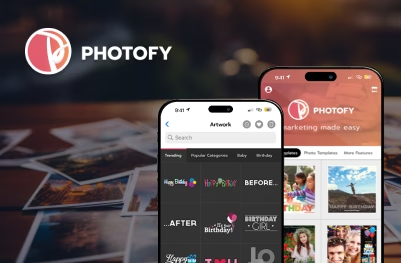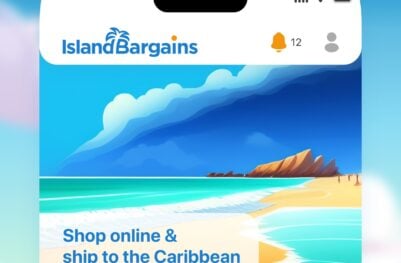- Developers
- Developer Blog
- Software Development
- How to use Hyper-Personalization to Improve Your Application?

profile

By Faiza Khalid
Verified Expert
6 years of experience
Faiza is a CIS engineer with a keen interest in software development, AI research, and technology writing.
Are you wondering how you can use hyper-personalization in your business application?
Personalization has been a hot trend in marketing for quite some time now. According to Accenture, 91% of customers prefer brands that deliver a personalized user experience.
Let’s discuss what hyper-personalization is, how is it different from traditional personalization, and how you can use it for your business product.
Hyper-Personalization
Hyper-personalization is an advanced technique to reach and interact with the target users. These highly customized interactions with customers involve the use of big data analytics, artificial intelligence, etc.
Businesses use the latest technologies to set the right context for their audience and market their product/service at the right time and through the proper channels.
So, how is hyper-personalization different from traditional personalization of software applications?
The conventional personalization techniques do not take into account individual users and their preferences. They loosely segment end users and interact with them accordingly. For example, showing specific kinds of apparel to users belonging to the age group of 18 to 23.
Hyper-personalization takes this a step further. It treats an individual user as a segment itself. It uses AI algorithms to analyze users’ activities, for example, recent product searches, time user spends mostly browsing shopping websites, etc.
The hyper-personalization algorithm then suggests products that a specific user seems interested in buying and at the time he or she is most likely to buy.
Take another example of marketing emails. We all know how annoying monotonous marketing emails sound sent to all users in bulk. Hyper-personalization can help you make your customer open and actually read it.
You can personalize an email for target users by specifying their name, mentioning their previous purchases, or browsing activity on your website, and further suggesting related products, promotion offers, sales deals, etc.

Get a complimentary discovery call and a free ballpark estimate for your project
Trusted by 100x of startups and companies like
Such a personalized email will force a user to at least take a quick look at it, and, who knows, this may turn into an actual sale!
Digital marketing has become quite competitive given the huge number of online businesses working today. Meaningful communication with your customers is a sure way to gain their trust, increase customer engagement, and improve customer experience.
Implementing Hyper-Personalization Strategies
So, how to implement hyper-personalization successfully in your business application? You will go through the following steps.
Identify the Required Data
You are likely collecting a lot of data from your users. Not all of this data is useful. You need to identify the data from big data sets that you will feed your machine learning algorithms to implement a hyper-personalization strategy.
A big part of using machine learning technology in your business processes is to provide them with quality data. The more data these machine learning algorithms go through, the better they perform in terms of identifying customer activity trends, preferences, etc.
The data is generally of two types. Quantitative data and qualitative data.
Quantitative data consists of information on how users interact with your application or website. The web traffic, users’ activity, users’ demographics (age group they belong to, the location they are accessing from, devices they are using, etc.), transaction history, customer support queries, etc., are quantitative data.
Quantitative data is related to the emotion and opinions of your target audience. It is usually collected through questionnaires, surveys, reviews, etc. This data helps to identify if something is hindering your users from buying or using your product/service, if they are loyal to your brand and will come again, etc.
Gather the Required Data
You will need to put in place proper channels to gather data for your machine learning algorithms.
You can make use of tools to gather data, and refine it by discarding erroneous and duplicate data values, etc., while also automating some data collection tasks.
You can use Google analytics, online surveys, and questionnaires, to collect important information on customer profiles, interactions, etc.
You may not fully understand if a particular is useful for your business unless an ML model links it to other user behavioral trends. Such deep learning models help discover new metrics and user motivations behind purchasing decisions, etc.
Perform Customer Segmentation
After identifying and gathering the essential data, the next step is to create user segments for hyper-personalized communication.
Although hyper-personalization focuses on an individual customer as a segment, you still require small segments to address users efficiently through messages, emails, etc.
Some of the segments you form can be based on the following:
- Users’ demographics;
- Purchase history;
- Location data;
- Average spending;
- Previous brand interaction;
- Customer support history, etc.
Please note that data points for customer segmentation will highly depend on the type of software application or service you are offering to your customers. You can add or delete segments depending on your business needs, type, etc.
Create Customized Customer Journeys
Now, you can create customer journey maps for each customer segment. You will plan stages in a customer journey that a user will likely go through. Moreover, you figure out the points where personalized interventions will help in making a user continue their journey on your application.
AI-based platforms make use of these customer journeys, intervention points, and other user data to offer personalized suggestions, messages, communication channels, etc.
For example, the hyper-personalization model will take into account the time a user is most likely to open and go through their emails, browse shopping websites, surf social media apps, etc. The application will interact with the user according to their behavior patterns and preferences.
Explore Multiple Channels
You can experiment with different approaches to interacting with a customer. The main target is to display the right type of content at the right time.
Hire expert developers for your next project
1,200 top developers
us since 2016
You can start by sending personalized emails at specific times, and if that does not work, you can switch to social media platforms. Some users may find reading emails a daunting task, and prefer social media browsing in their downtime.
One thing that will help you in choosing the right channel is the KPI definition. You can set key performance indicators such as the number of daily sales, number of daily active users, sales growth, lead conversion ratio, customer lifetime value, customer churn rate, etc.
The measurements of these KPIs will help you analyze if your set customer journey, hyper-personalized intervention points, selected communication channels, etc., are working and leading you to your business goals or if you need to change things up a bit.
Communicate Consistently
We would advise you to keep your customer communication consistent. Keep the tone, style, and messaging consistent throughout your marketing communications.
Consistency will build trust as customers will know what to expect from you; and authority as it conveys that you are confident in your brand, message, service, etc.
You have to strike a balance between experimenting and consistency. Experiment with the approach you adopt to reach your customer. Be consistent in the way you interact with them by being true to your brand.
You can also experiment with content to find what is more effective with users, such as email subjects, wordings, social media content format, etc. You can keep switching to find what works best for your audience.
Ways to Incorporate Hyper-Personalization in Your Application
The following are a few ways you can use hyper-personalization in your business applications or customer journeys.
Personalized Advertisements
The most common use case of hyper-personalization is a digital advertisement highly personalized for the target user. This can include an ad on a web page or a social media site, an email, an instant message, etc.
You can personalize the advertisement message by including the user’s name, a past purchase, etc., or show something that is relevant to the user’s interest, search history, etc. You can also include contextual information to make the message more real for the user.
For example, include the updated stock status of the product, current pricing, content that changes based on the location where the email is opened, etc. You can also offer a one-time discount price offer on a product user was recently browsing for instant sales conversion.
Such highly personalized ads and messaging effectively contribute to increasing the ROI for your business marketing strategy.
Customized Landing Pages
You can create a personalized user experience for users on your website by customizing the web pages according to customer preferences. You can mention real-time data values like, the location they are accessing your application from, include their name, show relevant content based on their interests and liking, etc.
Using Recommendation Engines
You can also integrate recommendation engines into your business application. A recommendation engine keeps on suggesting products/services to users based on their previous preferences.
For example, recommending music based on the genre a user mostly listens to, the type of clothes a user usually browses and buys, a movie similar to the movies user generally watches, etc.
Using Chatbots
You can also include hyper-personalization in your customer service support. You can provide multichannel support to your customers, online and offline, using the latest technologies.
Chatbots, based on conversational AI, play a huge role in the personalization of customer experience on your application. They interact with your customer based on the user’s behavioral data and address concerns based on the user’s previous interactions with the support personnel, product/service usage history, etc.
Dynamic Pricing and Promotions
Changing prices and offers when customers are most likely to buy or use your product/service is also a prominent use case of hyper-personalization. Hyper-personalization will give you the necessary data to monitor your customers’ activity and play with dynamic pricing.
Examples of Businesses Using Hyper-Personalization
The two most common examples of businesses using hyper-personalization successfully are; Amazon and Netflix.
Amazon
Amazon uses hyper-personalized email marketing. It sends highly personalized emails to target customers based on their demographics, previous purchases, and browsing history.
Hire expert developers for your next project
The hyper-personalization approach used by Amazon includes using an algorithm called item-to-item collaborative filtering. It takes into account the key data points and drafts a contextualized email for the intended customer.
Some of the data points considered are customer demographics, search query, average time spent on searching products, time of previous purchases, brand loyalty, etc. The result of creating a personalized shopping experience for target customers is a 35% conversion rate for Amazon.
Netflix
Netflix uses emails and push notifications as hyper-personalization channels. The experience is highly personalized right from the home page for a user, which shows content based on the past viewing history and overall viewing interests and habits of a user.
The algorithm that Netflix uses combines a user’s behavioral data and predictive analytics to predict viewing content for each user. The unique movie and show recommendations, according to customer expectations, increase user engagement.
Data points used by Netflix hyper-personalization algorithms include users’ viewing history, movie ratings, viewing duration, watched movie information, users with similar interests, etc.
The result of Netflix’s recommendation engine is quite significant for their business as 80% of subscription members follow the recommendations to watch content while just 20% search themselves.
Benefits of Using Hyper-Personalization
You can gain the following competitive advantage by following a hyper-personalization strategy for your business:
It Builds Customers’ Trust
Hyper-personalized interaction helps in fostering a connection with your customers. They feel a business values their presence and feel confident in coming back to your recommendations which increases customer loyalty to your business.
It Increases the Conversion Rate
When you show customers personalized content based on their demographics, preferences, and interests, they are a great chance to engage customers, as compared to mass marketing messages and emails that usually no one bothers to go through.
It Increases the ROI
Hyper-personalized communication and interaction with your target audience help increase the overall ROI for your business.
When a user finds the product they are looking for the past few days, and that too at the right time and on the preferred device, they not only make a purchase or buy a few more things, they feel interested and connected with your brand.
Next time they want a similar product, they will likely come to you. This shows that a hyper-personalization digital marketing strategy can help increase your customer satisfaction and customer retention, which ultimately translates to a good ROI.
Planning to Use Hyper-Personalization to Enhance your Application?
As we have discussed, gone are the days of sending mass marketing emails to your intended customer segment. With the abundance of online businesses and their digital marketing campaigns, you need to stand out. A hyper-personalization process can offer you great help.
Hyper-personalization engines are based on the latest technology of artificial intelligence and big data analytics. If you plan to invest in hyper-personalization techniques via a custom recommendation engine, etc., you are making the right investment decision given the significant benefits you can enjoy in the long run.
However, such custom software development requires a highly skilled team of software developers proficient in cutting-edge development tools and technologies. Read our guide on how to create an AI SaaS product to get more information about AI development.
If you do not find such expertise in your team, DevTeam.Space can help you via its field-expert software developers community. Write to us your initial project specifications, and one of our account managers will get back to you with more details.
FAQs on Hyper-Personalization
Hyper-personalization can be used in email marketing, instant messaging, website landing pages, digital ads on social media platforms, Google searches, etc.
Customer personalization is based on collecting the right information about the customer. Hence, you can improve personalization by improving the quality of customer data you are feeding to your hyper-personalization algorithms. Create better user personas, integrate AI into customer support, collect customer feedback, etc., to gather relevant customer data.
Retail is a prominent industry using hyper-personalization for its customers in the form of personalized product suggestions, email campaigns, dynamic pricing, etc.

Alexey Semeney
Founder of DevTeam.Space
Hire Alexey and His Team To Build a Great Product
Alexey is the founder of DevTeam.Space. He is award nominee among TOP 26 mentors of FI's 'Global Startup Mentor Awards'.
Alexey is Expert Startup Review Panel member and advices the oldest angel investment group in Silicon Valley on products investment deals.


